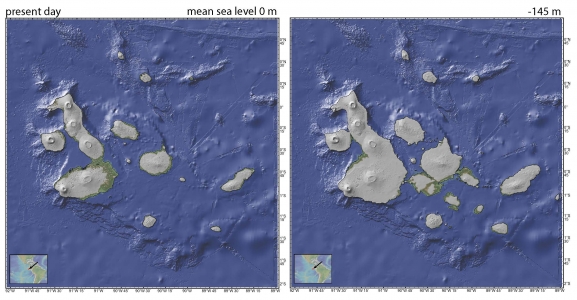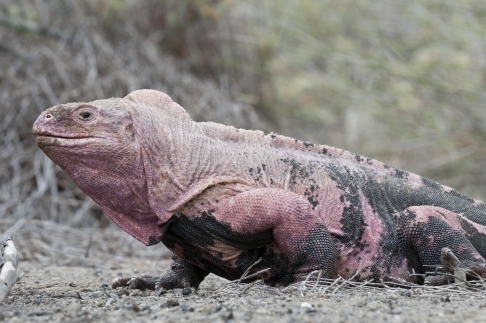 HKU Department of Earth Science
HKU Department of Earth Science
News

Speciation-Evolution Story on “Darwin’s Archipelago” Takes Dramatic New Twist
Life and Planetary Evolution | April 28, 2014
Jason Ali and Jonathan Aitchison’s Journal of Biogeography-published research, aimed at establishing why the land-bound reptiles on the Galápagos archipelago are present/absent on specific islands, has revealed an additional higher-level twist. The biogeography of the islands at the centre and west of the chain, which are connected by shallow ocean floor, has been controlled by major periodic shifts in local sea level, the extreme lows allowing the animals to move unimpeded across an extensive sub-aerially exposed platform. For practically all of the reptile groups, the oscillating geography mechanism has moulded the speciation process, hence their evolution pathways. Only the legendary giant tortoises do not fit - regular swimming between islands and past human translocations complicate their “story”.
Galápagos’ biota has long been recognized as special. The proposal that a key part of the archipelago’s biota has been forged in such a distinctive manner makes it even more so. Notably, there are few other island systems where the same process could have played out, perhaps the Canary, Cape Verde and Maldive groups. In all three cases, though, far fewer islands are involved. Galápagos is thus a truly unique biological laboratory; the study increases its significance as a scientific resource and enhances its conservational value.
Figure 1 (above): Map showing the Galapagos Islands today and 20 kyr ago, when sea levels across the archipelago were 144 m lower. At these levels, many of the central and western islands form parts of a single platform.

Figure 2: Pink land iguana, Conolophus marthae, one of Galapagos' iconic reptile species
